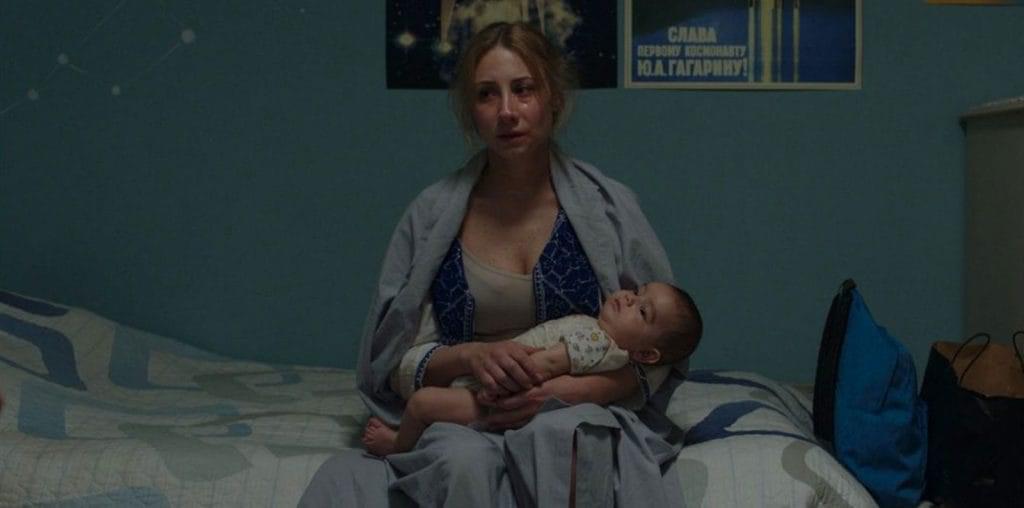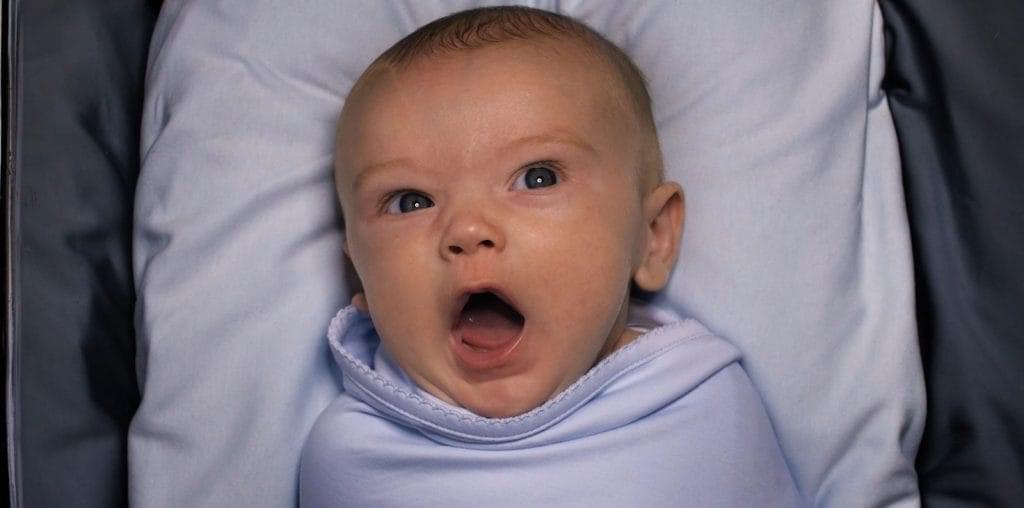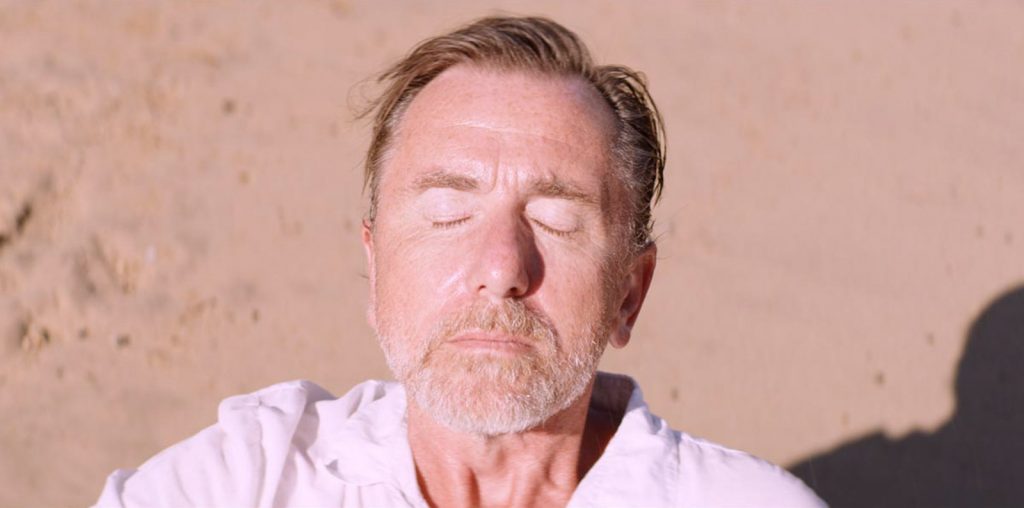
A tesseract is a fourth dimensional object and as such is hard to visualize by us creatures who inhabit the third dimension. One way to see it is to visualize the bridge between dimensions. Let’s say you draw a square on a piece of paper. Now put the pencil’s tip at the very center of your square and try to move away from all of the square’s sides at the same time. You cannot do this using only the second dimension because if you move to the left, you get closer to the left side but further from the right. Same thing happens if you move up or down or right. Any time you use a 2 dimensional direction you’ll always get further from one point but closer to another. The only way to move away from all of the square’s sides is to use a third dimension. You place your pencil at the center of the square. Now move it upwards. See? You went from 2 dimensions to 3.
Same thing happens between the 3rd and 4th dimension. You place your pencil in the center of a cube, and move it away from all of the cube’s sides at the same time. Impossible?
Not in the 4th dimension.
And that’s what a tesseract is. It’s the fourth dimensional equivalent of a cube. Just like the cube is the third dimensional equivalent of a square. Only, if you look at a cube head on, what does it look like? A square. Same thing happens with a tessaract, if you look at it in a certain way. It looks exactly like a cube. Move your head a little bit and it suddenly looks like nothing you can understand.
The movie is all about perception and the blinders that all of our characters put on themselves. They stand before a cube and only see a square.
It’s not a science-fiction film, although I’ve heard it touted as such.
The title certainly would suggest something science-fictionish and certain scenes seem to back up that idea. However, this isn’t a movie about anything but ideas.
Jonathan Rhys-Meyers plays Sean, a man unfit to be a drug courier but doing the job anyway. Saskia Reeves plays Rosa, a psychologist interviewing children in Bangkok about their dreams. Alexander Rendell plays Wit, one of the Bangkok street children who works in a hotel where both Rosa and Sean stay.
All of these characters have blinders before their eyes and only see what they want to see, a simple cube instead of the infinitely more complex tesseract. Sean sees himself as a competent courier instead of a complete fuckup that should get back home before he’s killed. Rosa sees herself as doing important work instead of using the children she interviews as surrogates for her own dead son and Wit sees himself as a good boy, an honest boy even though he steals and has no real empathy for anyone but himself.
The characters are all self-absorbed and narcissistic. All that matters to them is what they think and everything they see and feel is filtered through that narcissism. When Rosa meets Wit she sees a good boy forced into dire acts by circumstance. She even gives him money even though he almost stole her camera. Only, life isn’t that simple, and Wit isn’t a good boy. He’s just a more innocent version of every street hustler and thief on the streets around her. She isn’t seeing Wit as he is, a boy as corrupt as his environment, but as she would like him to be.
But like Wit says: “No Choice”. They see their destiny unravel, but not the thing itself. Maybe they can’t see the tesseract because it’s something that can’t be seen. All they see is a cube that turns into something else every time they look at it.
This leads to a showdown when Wit steals Sean’s heroin and gives it
to Rosa under the guise that it’s a form of Thai pudding. Why does Wit do this? All that Rosa has done is show him kindness. Perhaps there was no choice in the matter. There is kindness within the boy, but there’s also greed and selfishness. All Rosa allows herself to look at is the kindness and in doing so puts herself in dire jeopardy. Helping Wit is not impossible, but just giving him money and hugs isn’t going to do it. Wit has been a thief and a liar all his life and change isn’t a black and white thing. For him, lies are second nature, he doesn’t even think twice about giving her the heroin because that’s the kind of person he’s become.
Unfortunately, I’m reading a lot more in this film than Oxide Pang shows us. It helped that I knew what a tesseract was. Had I not, I’m not so sure I would have known what I was supposed to be watching. The movie’s main problem is that nothing is put into context and you have no real idea what’s going on. Case in point: Towards the beginning there are several scenes that lead us to believe that the characters are psychic or perhaps living alternate futures all at once. None of this is developed beyond the few scenes shown and by the end of the movie, it’s all but forgotten. Only, what was it about? Pang never tells us. There’s also a bit of a “twist” in the end that amounts to nothing more than a wet fart. I could tell that Pang just took scenes from the Garland book and threw them on the screen without a care in the world about whether or not they made sense within the movie he was making.


